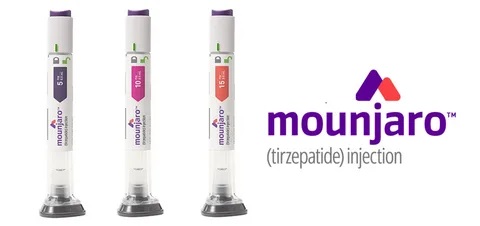Mounjaro in Dubai: Complete Guide to Weight Management and Metabolic Health

Obesity and metabolic disorders are a growing concern in modern society. Many individuals struggle to lose weight due to insulin resistance, hormonal imbalances, or repeated dieting failures. Mounjaro in Dubai is a medically supervised injectable therapy designed to address these challenges, helping patients achieve sustainable weight loss while improving overall metabolic health.
How Mounjaro Works
Mounjaro contains tirzepatide, a dual receptor agonist that targets GLP-1 (glucagon-like peptide-1) and GIP (glucose-dependent insulinotropic polypeptide) pathways. These hormones naturally regulate:
-
Appetite and satiety
-
Glucose metabolism
-
Insulin sensitivity
-
Digestive function
By enhancing these hormonal signals, Mounjaro reduces hunger, increases fullness, improves glucose processing, and helps the body burn fat more effectively. Patients often notice gradual, sustainable weight loss, improved energy, and better blood sugar control over several weeks to months.
Expected Results
Patients can expect:
-
Steady fat reduction of 5–15% over 3–6 months depending on adherence and starting BMI
-
Reduced cravings and appetite control
-
Improved insulin sensitivity and blood sugar levels
-
Enhanced metabolic health and cardiovascular markers
Results vary individually, and combining Mounjaro with healthy diet and exercise maximizes outcomes.
When Should You Avoid Mounjaro?
Mounjaro is not suitable for:
-
Patients with a history of thyroid cancer or multiple endocrine neoplasia
-
Individuals with pancreatitis or severe gastrointestinal disorders
-
Pregnant or breastfeeding women
-
People allergic to tirzepatide or any injectable components
Consult a licensed healthcare provider before starting therapy to ensure safety.
Dosage Guidelines / Usage
-
Mounjaro is administered via subcutaneous injection (abdomen, thigh, or upper arm)
-
Treatment starts with a low initial dose (usually 2.5 mg weekly), gradually increased every 4 weeks based on tolerance
-
Maximum dose often reaches 15 mg weekly for optimal results
-
Regular monitoring ensures adjustments for safety and efficacy
Always follow medical supervision—self-dosing can lead to side effects or reduced effectiveness.
Safety Precautions
-
Do not use without prescription or medical guidance
-
Monitor blood sugar levels, especially if diabetic
-
Be cautious with other medications that affect insulin or blood sugar
-
Stop therapy and consult your doctor if severe nausea, vomiting, or abdominal pain occurs
Professional supervision is key to balancing efficacy and safety.
Mounjaro vs Other Treatments
| Feature | Mounjaro | Ozempic/Wegovy | Diet & Exercise Only |
|---|---|---|---|
| Mechanism | GLP-1 + GIP dual agonist | GLP-1 receptor only | Hormonal control indirect |
| Appetite suppression | Strong | Moderate | Variable |
| Insulin sensitivity | High | Moderate | Low |
| Weight loss | 5–15% in 3–6 months | 5–10% in 3–6 months | 2–5% (often less) |
| Medical supervision required | Yes | Yes | Optional |
Mounjaro provides enhanced hormonal control compared to single-pathway medications, often producing faster and more sustainable results.
Cost Factors
-
Cost varies depending on dosage, duration, and clinic location
-
Typical treatment may range AED 2,500–AED 4,500 per month
-
Insurance may cover part if prescribed for diabetes or metabolic conditions
-
Bundled programs often include consultations, lab tests, and follow-up visits
Consult your clinic for a detailed estimate.
Mounjaro Side Effects & Restrictions
Common Side Effects:
-
Nausea or mild vomiting
-
Abdominal discomfort or bloating
-
Diarrhea or constipation
-
Mild fatigue or dizziness
Rare but serious:
-
Pancreatitis
-
Gallbladder inflammation
-
Severe allergic reaction
Side effects are usually temporary. Restrictions include avoiding Mounjaro if pregnant, breastfeeding, or having specific medical histories.
Recommended Foods During Mounjaro Therapy
Eat More:
-
Lean proteins (chicken, fish, eggs, tofu)
-
High-fiber vegetables (broccoli, spinach, carrots)
-
Whole grains (oats, brown rice, quinoa)
-
Healthy fats (avocado, nuts, olive oil)
-
Low-glycemic fruits (berries, apples, pears)
Avoid:
-
Sugary drinks and desserts
-
Processed snacks and fried foods
-
Refined carbs (white bread, pasta)
-
Excessive high-fat dairy or fatty meats
Proper nutrition complements the appetite suppression and metabolic benefits of Mounjaro.
Frequently Asked Questions (FAQs)
1. How long before I see results?
Most patients notice initial appetite control in 1–2 weeks, with significant weight loss over 3–6 months.
2. Can Mounjaro be used with other medications?
It may interact with insulin or oral diabetes medications. Always consult your doctor.
3. Is the weight loss permanent?
Long-term results depend on lifestyle changes. Mounjaro helps initiate sustainable weight loss, but diet and exercise are crucial for maintenance.
4. How is Mounjaro different from Ozempic?
Mounjaro targets both GLP-1 and GIP hormones, while Ozempic targets GLP-1 only. Dual targeting enhances appetite control and insulin sensitivity.
5. Are injections painful?
Subcutaneous injections are generally mild, similar to insulin injections, and are well tolerated by most patients.
Choosing a Trusted Clinic
Selecting a certified clinic ensures proper assessment, safe injection technique, and continuous monitoring. In Dubai, tajmeels clinic provides professional care, personalized treatment plans, and expert supervision for Mounjaro therapy, helping patients achieve weight loss and improved metabolic health safely.
- Art
- Causes
- Crafts
- Dance
- Drinks
- Film
- Fitness
- Food
- Oyunlar
- Gardening
- Health
- Home
- Literature
- Music
- Networking
- Other
- Party
- Religion
- Shopping
- Sports
- Theater
- Wellness


